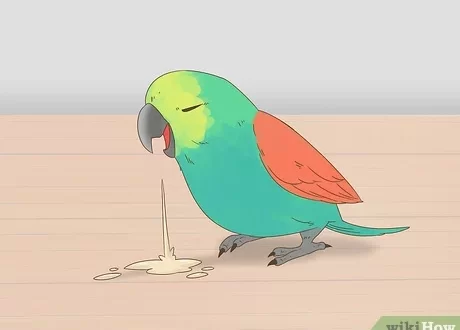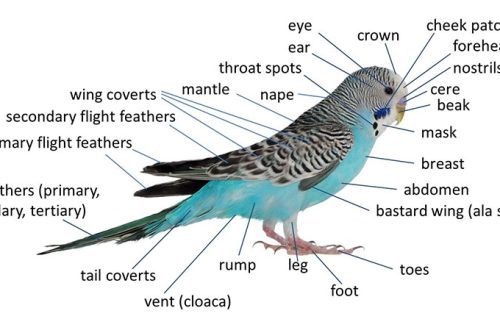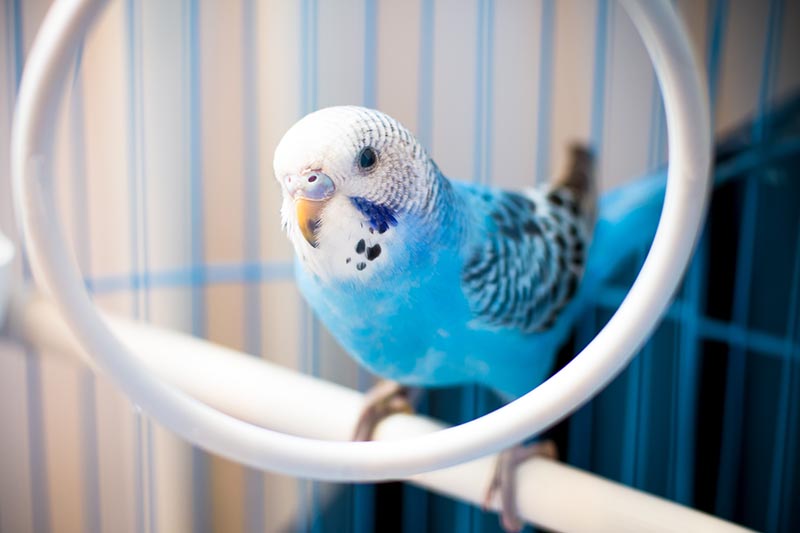
Budgerigar: care and maintenance
Budgerigar care begins long before it appears. The bird should be brought into the house after acquiring everything necessary for your friend to feel as cozy and comfortable as possible in a new family.
If you take into account all the requirements for feathered pets, then the maintenance of budgerigars will not be a burden to the owner.
To begin with, you need to purchase a cage, feeders, a drinking bowl, stock up on wooden perches, a ring and toys, make or buy a walking platform.
How to determine the right place for the cage and what should be the house for the budgerigar you can read here
How to choose a healthy wavy you will learn here
Adaptation
So, you have in your hands the treasured box with the long-awaited parrot. A cage has already been installed at home, in which they are waiting for the bird: a full feeder, a drinking bowl with clean water and a bell. You can sprinkle a little grains on the bottom of the cage, perhaps at first they will attract the attention of the chick faster than the feeder.
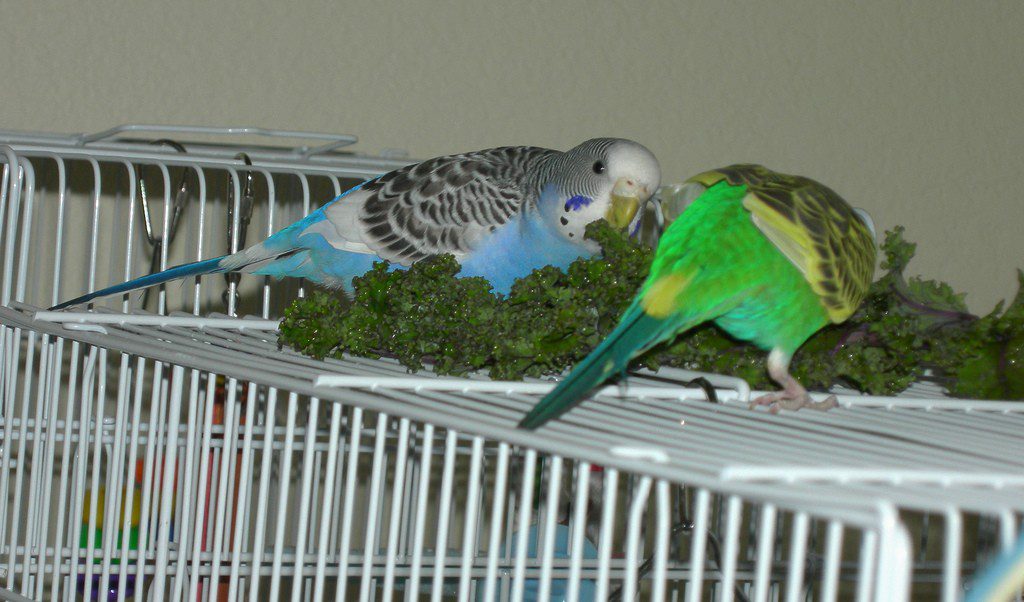
Let the parrot get out of the carrier on its own in the cage, while not allowing the bird to fly into the room.
Such an unexpected flight will not bring anything good, but will only increase the stress and shock of the baby. Such slips can make your attempts to tame a budgerigar much more difficult.
Having released the parrot into the cage, move away from it, let the bird get used to it. He will need time to look around and calm down. It may take more than one day until you notice that the feathered one has begun to eat or drink water.
Do not worry, it is likely that the bird will stealthily approach both the feeder and the drinker, especially trying to do this when you are either absent or turned away.
Also, against the background of stress, the parrot may have a slight indigestion, this is not scary and passes quickly.
Be patient and do not disturb the parrot unnecessarily. For the first few days, approach the cage and speak with a feathered friend in an affectionate, quiet voice.
No need to open the cage and try to stroke or touch the bird!
The budgerigar needs to feel safe and protected here. You can cover one side of the house with a transparent cloth so that the bird has the opportunity to hide if it feels anxious or uncomfortable.

You need to take care of the budgerigar during this period very carefully: do not make sudden movements, do not slam the door and swing objects.
Home care may differ from what the bird saw before, especially if the parrot did not live alone.
Hands in the cage can only be for the reason of replacing the feed with fresh and to clean the pan. When cleaning, talk to the bird, affectionately call it by name and gradually the parrot will feel calm in your presence.
Do not turn on loud music, rattle, knock or shout in the room where the cage is located. Let the bird first get used to you and the objects and sounds around it. Later, turn on the radio or TV at a low volume.
When you see that the wavy has begun to actively eat, be interested in toys in the cage and chirp, you can begin the process of taming.
You can find more detailed taming tips here.
How to care for a budgerigar
It is best if you set a daily routine for the bird. In this way, the wavy will adjust to your schedule and his rest hours will not be suddenly interrupted.
Also, if the cage of the budgerigar is in a room where some movement and noise occur until late, cover it with a dense cloth that does not let light through. So the parrot will feel calmer and will be able to fall asleep.
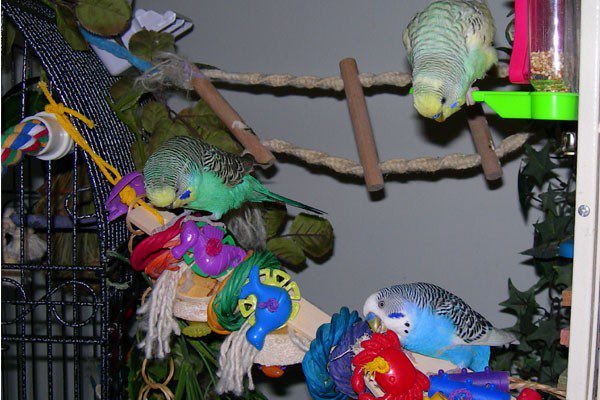
If the condition of the room allows you not to cover the parrot’s house at night, then the best option for a good wavy sleep is a dim, muffled light.
Hygiene of the cage and accessories should be carried out weekly, and as for the tray, feeders and drinkers, they should be washed daily.
Thanks to these actions, the parrot will be in a clean environment without the threat of disease, and the amount of husks and feathers around the cage will be much less.
A balanced diet is the key to good health for your bird. Feeding a parrot with a high-quality grain mixture, fresh herbs, vegetables, fruits and berries, young shoots of fruit trees, sprouted seeds, mashed cereals, mineral mixture, sepia, mineral stone, as well as fresh and clean water in a drinking bowl will strengthen the immune system of the wavy and ensure a healthy bird and happy life.
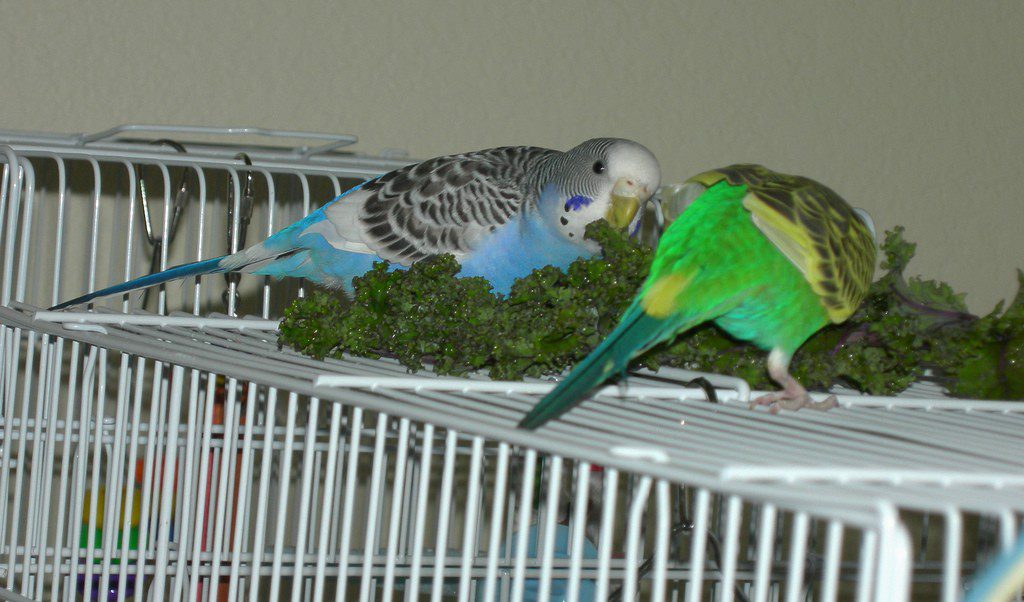
Budgerigars are very fond of taking a bath in warm and sunny weather. Bathing for birds is a pleasant and rewarding process.
How to teach a parrot to swim and what bathing suits can be, you can read here
Sunlight is very important for the immune system of parrots, but the rays that pass through window panes lose the desired ultraviolet spectrum. In urban conditions, not everyone can afford to arrange sunbathing for birds, for these purposes they use the Arcadia lamp and the like.
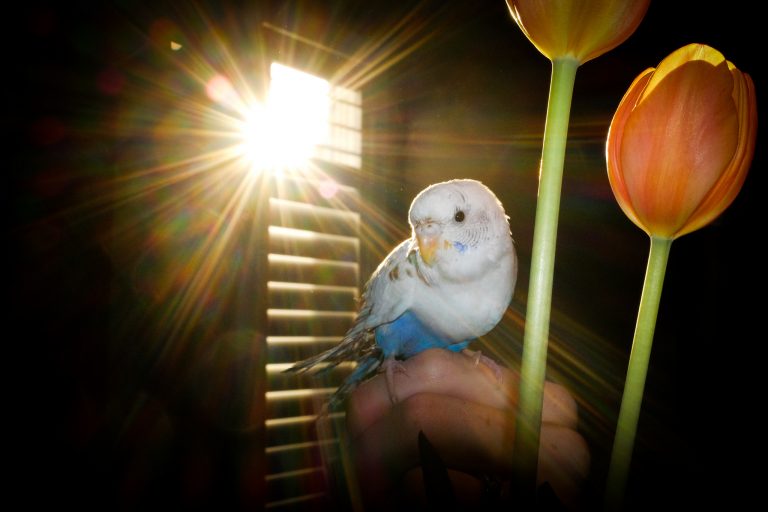
A lamp and a timer are essential attributes for a full-fledged life of a bird in an apartment. They will help keep the length of daylight hours normal and maintain undulation, especially in the autumn-winter period.
Wild budgerigars spend most of their time looking for food, their flights over long distances are fraught with danger and there is practically no time to relax. What, what, but the time at home wavy – more than enough. And the task of the owner is to provide the fidget with an interesting activity and fun games.
Therefore, toys and a walking platform play a big role in the life of a parrot. These items facilitate the communication of the bird with the owner, and also develop the communication skills and ingenuity of the wavy.
Try to spend as much time as possible with the bird, show her options on how to use one or another toy, throw balls together from the table or build and destroy a tower of blocks.
Budgerigars are in great need of communication, especially if you have one bird, it will reach out to you and strive to keep you close to it for as long as possible. Let the baby become your friend, because for him – you will be the only one with whom the feathered one can chat and have fun to the fullest.
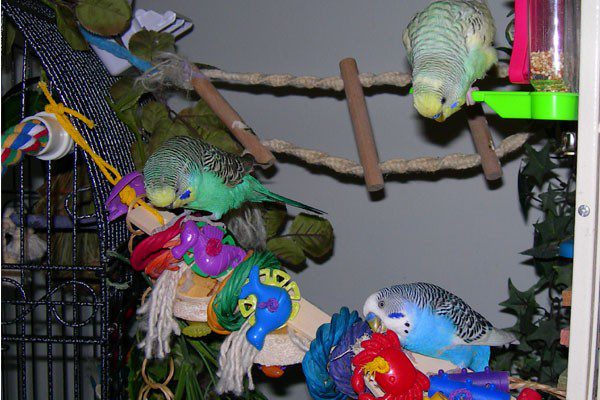
When you have several birds, then, having come home from work, your conscience will not torment you that you left the merry fellow alone and you can calmly participate in their games in the evenings and watch the continuous pranks of birds.
A first-aid kit for a wavy should be present even before the appearance of a mischievous person in your house!
Buy the necessary drugs that you may need to provide first aid to your budgerigar. You can find a more detailed list of medicines here.
Let there, in the first aid kit, be the phone numbers of ornithologists and the addresses of veterinary clinics, so that in the event of an emergency situation, you do not waste precious time looking for contacts.
If you want to start breeding budgerigars in the future, you should foresee a separate place for a second cage in advance (you may have to quarantine someone or for a number of other reasons).
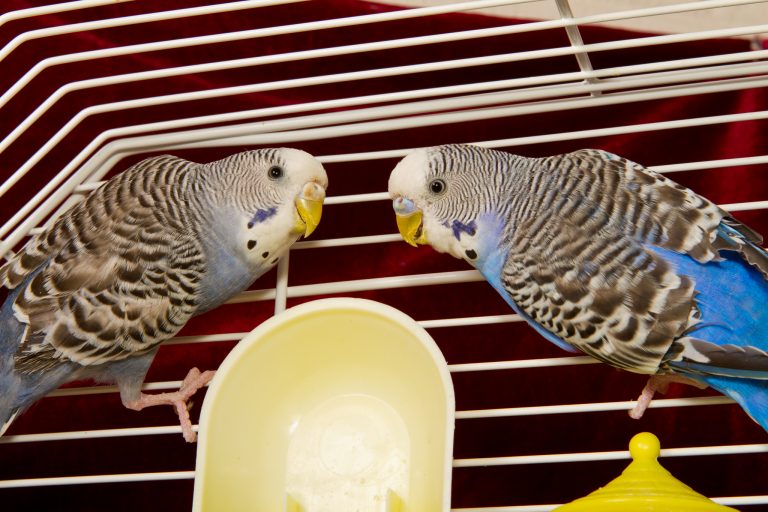
You will also need to purchase or make a nest for a parrot with your own hands, think about how you will fix it: inside the cage and outside. You will need a lot more knowledge about budgerigars if you decide to take the step of breeding.
Keeping a budgerigar at home is not difficult if you are attached to a pet and you want to bring him joy. Any of your actions directed at the bird will be enthusiastically perceived by it and, with its inherent activity, will easily turn into fun.
Video showing the normal behavior of a budgerigar in the first minutes of his stay in a new place:
Fun with toys:
Hand budgie:



